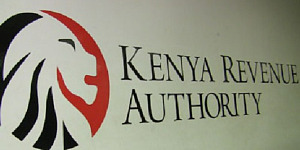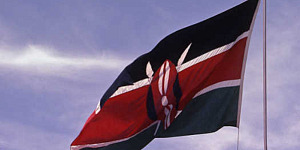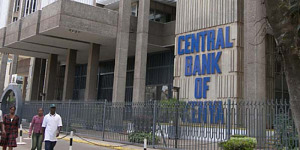 Fitch Ratings has revised the Outlook on Kenya's Long-term foreign and local currency Issuer Default Ratings (IDR) to Negative from Stable and affirmed them at 'B+' and 'BB-', respectively. The agency has also affirmed the Short-term IDR at 'B' and Country Ceiling at 'BB-'. The issue ratings on Kenya's senior unsecured foreign and local currency bonds have been affirmed at 'B+'.
Fitch Ratings has revised the Outlook on Kenya's Long-term foreign and local currency Issuer Default Ratings (IDR) to Negative from Stable and affirmed them at 'B+' and 'BB-', respectively. The agency has also affirmed the Short-term IDR at 'B' and Country Ceiling at 'BB-'. The issue ratings on Kenya's senior unsecured foreign and local currency bonds have been affirmed at 'B+'.
KEY RATING DRIVERS
The revision of the Outlooks to Negative and affirmation of the ratings reflects the following rating drivers and their relative weights:
HIGH
Kenya's public finances have been on a steadily deteriorating trend since 2008, reflecting weak revenue performance, increasing infrastructure spending, and persistently high current expenditure. The National Treasury estimates a revised budget deficit of 8.2% of GDP for the year to June 2015 (FY15), lower than the estimated deficit of 10.1% (June 2015), reflecting under-execution of spending under the second supplementary budget that was published shortly before the end of the fiscal year.
The final outturn was higher than the deficit of 6.4% announced originally in June 2014. Excluding the impact of the Standard Gauge Railway (SGR), which was not included in the June 2014 budget, the deficit would have been 6.1% of GDP. Weak revenue performance was offset by lower current expenditure (wages and other) as well as under-execution on capital projects. The budget announced in June 2015 expects the deficit to widen to 8.7% of GDP in FY16. In contrast, Fitch forecasts a deficit of 8% of GDP, with likely revenue under-performance more than offset by under-execution of capital projects.
The government plans to increase domestic borrowing to 3.4% of GDP, up from 2.9% of GDP (budgeted 3.3% of GDP). This risks putting upward pressure on domestic yields, which have risen sharply recently due to an increase in the Central Bank Rate. During FY15, the government opted to contain yields by only accepting bids within a target range, resulting in auctions being under-subscribed. Fitch expects that the extent to which the authorities will be able to repeat this will be limited in the current fiscal year.
Fitch expects government debt to rise to 53.2% of GDP by FY16, up from 42.4% in FY13 and 36.9% in FY08. The increase reflects significant new debt incurred to fund infrastructure, and a weaker exchange rate, as well as a steady loosening in fiscal policy since the global financial crisis. While current debt levels are sustainable, Fitch highlights the risk to debt sustainability of large-scale infrastructure projects, particularly if the anticipated growth does not materialise, without consolidation of the current budget balance.
MEDIUM
Kenya's current account deficit is structurally wide, reflecting stagnant exports and a capital-intensive import bill, due to rapid infrastructure investment. The deficit is expected to widen to 9.9% of GDP in FY15 from 7.6% in FY14. Increased spending on the SGR will largely offset gains from lower oil prices, with the deficit expected to narrow only slightly to 9.7% in FY16. Foreign direct investment remains below peers, resulting in an unfavourable funding mix, including short-term capital and debt financing. Net external debt as a percentage of GDP is above the 'B' median and rising.
Kenya's 'B+' foreign currency IDR also reflects the following key rating drivers:
Growth has been robust at 5.3% over the past five years, but below the government's target of 6%. Fitch expects large-scale infrastructure projects in power and rail to boost growth above 6% in 2015. However, terrorist activity and its adverse impact on the tourism industry will curtail faster growth. Efforts to improve the business environment continue, focusing on easing cross-border trade, registering property and tax collection, including the introduction of electronic tax filing.
A strong US dollar and a large current account deficit have exerted pressure on the Kenyan shilling, down 10% since January 2015. The Central Bank of Kenya intervened to limit the volatility of the exchange rate. As a result, unencumbered international reserves have fallen to USD6.7bn (or 3.7 months of CXP) in July 2015 from USD7bn in December 2014 (or 4 months of CXP). The Central Bank has also hiked rates by 300bps to 11.5% in recent months, in part to support the exchange rate.
Security in Kenya remains a significant risk and will continue to adversely impact tourism. The government continues to struggle to contain sporadic attacks by Al-Shabaab, as highlighted by the attack on Garissa University on 2 April. The historical marginalisation of predominantly Muslim communities, combined with the perceived heavy-handedness of the military, has led some local commentators to argue that this could lead to continued radicalisation. The government highlights that it is addressing the underlying cause of radicalisation through the devolved county system and greater community outreach. Increased defence spending to modernise and improve the capacity of police and military will likely improve counter-terrorism efforts, albeit at a cost to the budget.
Kenya's ratings are constrained by weak GDP per capita, which is one-third of the 'B' median. The country is in the 22nd percentile of the UN Human Development Index. Kenya's social and governance indicators are weaker than the 'B' median. A weak business environment is harming competitiveness and foreign direct investments. Kenya's World Bank Doing Business Index ranking slipped to below the 'B' median in 2013.
RATING SENSITIVITIES
The main factors that individually, or collectively, could trigger negative rating action are:
- Failure to consolidate public finances and stabilise public debt/GDP
- Failure to narrow the current account deficit
- A marked deterioration in the political environment and security undermining Kenya's long-term growth performance
The main risk factors that, individually or collectively, could trigger positive rating action are:
- Effective implementation of a fiscal consolidation plan and stabilisation of public debt/GDP
- A longer track record of prudent economic management and further regulatory reforms to foster an improved business environment and faster economic growth
KEY ASSUMPTIONS
The ratings and Outlooks are sensitive to a number of assumptions.
Fitch assumes that GDP growth will recover to about 6% on average in the medium term, supported by rising infrastructure investment and the development of the oil sector. No widespread drought is assumed.
Fitch assumes a basic degree of political stability is maintained.






































